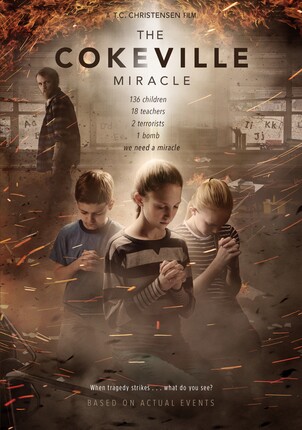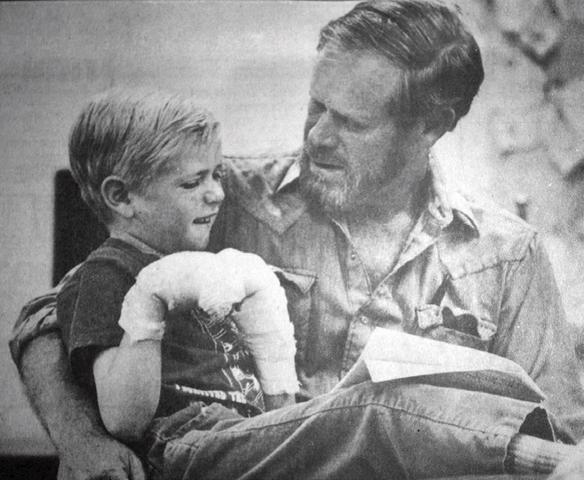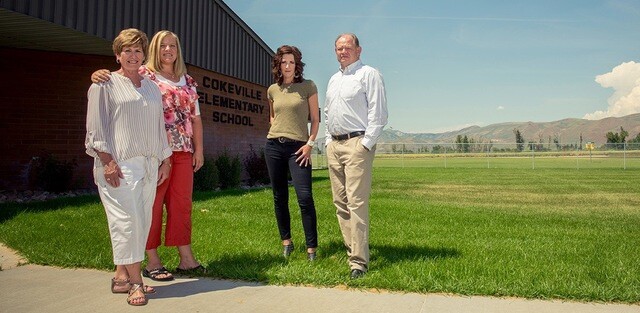EDITOR’S NOTE: This Cokeville Miracle article discusses a traumatic event where death and injuries occurred. While we have made every effort to avoid graphic language, this article might be disturbing for some readers.
On May 16, 1986, an elementary school in the tiny town of Cokeville, Wyoming, was held hostage by a married couple with a bomb. The miraculous events that followed transformed the lives of hundreds of people, including many who witnessed angels or received heavenly help from deceased ancestors. These are the true stories behind the hit film The Cokeville Miracle.
At approximately 1:30 p.m. on a sunny Friday afternoon, David Young and his wife, Doris, quietly and methodically took control of Cokeville Elementary. Wielding a homemade bomb and several guns, the Youngs took staff members hostage as they made their way to the first-grade classroom. Students and teachers throughout the school were unknowingly drawn into the crisis when Doris Young went from room to room, instructing them to gather in classroom #4.
“I felt immediately uncomfortable,” recalls Amy Bagaso Williams, who was in the fifth grade. “There was nothing extraordinary about her, just something weird.”
With no real reason to question Doris, Williams’s class made its way down the eerily silent hallway and into the 30-by-32-foot room where the rest of the school was being held—154 people in all. Inside stood David Young, a string detonator around his wrist and a homemade bomb by his side.
A Day of Terror
Young, a former Cokeville town marshall fired for misconduct years earlier, had returned to start a revolution and create a “brave new world” where he would be leader. And he demanded a ransom of $2 million per child. As he read his nonsensical manifesto, “Zero Equals Infinity,” children began to cry, including Williams.
“I began to wonder, ‘What happens if I die today? I don’t know where to go. Will I see my family again?’ I was really scared for the unknown. Most of the kids in my class were LDS, but I wasn’t,” Williams says. “I was a boat on an ocean without a sail—there wasn’t any anchor to tell me what life was about.”
Soon, gasoline fumes from the bomb filled the hot, crowded room, making students and teachers sick and convincing Young to allow some windows to be opened. He also allowed teachers to keep their classes together to help them stay calm. The hours ticked by as teachers read stories and students colored pictures and played with Legos. Some also gathered together in groups to pray.
Kamron Wixom, a sixth grader, prayed with about a dozen of his fellow students. “Kneeling, we bowed our heads and folded our arms. The feeling [after the prayer] was one of total confidence that we had just placed our lives in the hands of our loving Heavenly Father,” he recalls. “It was like our part was completely done, and it was just a matter of time.”
Williams recalls a kindergarten teacher inviting her to join the teacher and some students in prayer—an unfamiliar concept for the fifth grader.
“I told her I didn’t know how to pray,” she shares. “The teacher said, ‘You don’t have to know how.’ So I crawled over and folded my arms and bowed my head. I don’t remember much of what she said, but I remember suddenly feeling like I had a warm blanket around my shoulders—this incredible amount of comfort and joy that I can’t explain. I knew in my heart that I would be okay no matter what happened.”
Another fifth grader, Lori Nate Conger, also prayed with some of her classmates. “I remember thinking, ‘David Young can control a lot of things, but he can’t keep us from praying. That’s one thing he cannot do,’” she says.
Young grew increasingly agitated as the afternoon wore on. In an effort to keep the children away from him, teachers used masking
tape to create a “magic square” around the bomb and then instructed the children to stay outside of it. Eventually, Young stepped away to the restroom, leaving the bomb detonator tied to Doris’s wrist. While he was gone, the unthinkable happened—Doris accidentally jerked the string and the bomb exploded.
“It was an explosion that I can’t explain—a total instant black, the kind of black that you can’t see anything,” remembers Katie Walker Payne, who was a first grade student at the time. “I felt compression and heat like nothing I had ever experienced. I heard teachers screaming for everyone to get down. I looked in the center of the room and all I could see was fire.”
“There were flames all over the room and children screaming—just pandemonium,” recalls Carol Petersen, a second grade teacher at the time. “Another teacher was trying to help me escape. I said, ‘I don’t know where my children are! I can’t leave!’ but he yelled ‘Get out! Get out!’”
Children and teachers escaped through windows and the classroom door. Williams recalls, “When I got to the hallway, I felt a tickling sensation on my shoulder and ear. I took a few steps and started feeling heat on my skin—I realized I was on fire.”
She dropped to the floor and started rolling to put out the flames. Soon two teachers ran to her aid and slapped the flames out with their bare hands. “Then they picked me up and told me to run,” she says.
As the children escaped, David Young began firing a gun inside the smoke-filled classroom. Outside, the music teacher, John Miller, lay on the ground, his white shirt soaked in dark, red blood. None of the children were hit, but Miller was shot in the back as he helped others out of the burning school. (He would later recover.)
Frantic parents, gathered behind police barricades, cried out for their children as police officers ran toward the school. Ambulances, fire trucks, and news cameras lined the streets.
“I saw bodies all over the lawn, and I didn’t know if they were dead or alive,” recalls Conger.
“Everyone was just so black that you couldn’t recognize anyone. Some kids were badly burned, with skin hanging off their arms and necks. I didn’t even know where to go or what to do.” Conger continues, “I found my older brother pretty quickly, and we just started walking toward our home. Then I saw my mom running down the street. I’ll never forget that reunion when she ran toward us and wrapped us in her arms. For the first time, I remember thinking, ‘I’m safe.’ It’s something I will never forget.”
A Day of Miracles
Despite the explosion, all students and staff made it out alive; only David Young and his wife perished. (David, upon finding Doris engulfed in flames after the explosion, shot her before taking his own life.)
Ron Hartley, lead investigator for the Lincoln County Sheriff’s Office, had four children who survived the bombing. When he arrived at the scene, he was immediately told that the physical evidence didn’t add up.
“I met the bomb tech right there at the door, and he said, ‘Hartley, what you have here is a miracle. That bomb should have leveled the wing of this school, but it looks like the bomb blast went straight up. I don’t know why—I can’t explain it.’”
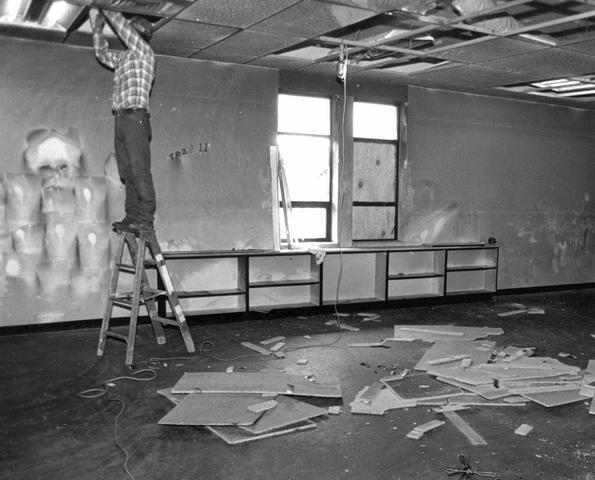
A workman repairs the first grade classroom after it was heavily damaged by the bombing. Photo courtesy of the Casper Star-Tribune Collection, Casper College Western History Center.
In the days after the bombing, more astonishing evidence came to light. Investigators discovered that wires to three of the bomb’s five blasting caps had been mysteriously cut, preventing detonation. Furthermore, the explosive powder that should have lit the air on fire had been miraculously hindered from its deadly purpose, thanks to the leaking gasoline. And though the walls were pocked from shrapnel, no one was hit by any of it.
“Everybody kept saying, ‘Isn’t this a miracle?’ But I took it as luck,” says Hartley.
His perspective changed dramatically a couple weeks later, however, when his 6-year-old son confided in a psychologist that he had seen angels on the day of the bombing.
Angels and Ancestors
“I came home with the intent of factually proving to him that he couldn’t have seen angels,” Hartley recalls. “I asked him who he saw, and he said, ‘I don’t know. She didn’t tell me her name, but I think it was Grandma Meister.’ This was exactly what I was looking for. I told him, ‘It wasn’t Grandma Meister because she’s alive and living in Pinedale.’”
But the young boy insisted that his story was true. That’s when Hartley asked his wife to get out the family photo album.
“We put it on the table right in front of him, and I started flipping through the pages. I flipped to one page when suddenly he put his little hand on a photo and just beamed,” Hartley shares.
“When you do interrogations in law enforcement, you watch for body language. You can tell through physical reactions when someone is lying and when they are not,” he continues. “When my son saw that picture, he just brightened up and said, ‘That’s her! That’s my angel!’ And it wasn’t Grandma Meister—it was my Grandma Elliott. How do you argue that? She’d been dead for three or four years.”
Hartley’s son told him there were angels for everyone in the room that day, and just prior to detonation, the angels joined hands around the bomb and went up through the ceiling with the explosion.
“When he said that, it lined up with the physical evidence. That, in addition to the fact that he picked out Grandma Elliott, is evidence I can’t deny,” he says.
Other children also gave accounts of heavenly intervention, and in the months after the bombing, more of them were able to identify ancestors who helped keep them safe on the day of the crisis.
“As I sat coloring, I looked up and saw a woman dressed in a long white dress. She had short, dark brown hair,” Payne recalls. “She said to me, ‘Katie, I love you very much. You need to listen to your brother and remember that I will always love you.’ I remember just nodding my head. I looked down for a second, and when I looked back up, she was gone.
“Soon after that, my brother came over and told me we were going to go sit by the window. I followed him and sat down, and he then went and got my sister Rachel. He told us he had to tell his friends he was going to sit with us, and he would be right back. He walked across the room and the bomb detonated.”
Eight months later, Payne learned who the woman in white was when her mother pulled out an old locket.
“I kept telling my parents about the lady who had talked to me and that I didn’t know who she was,” she recalls. “But I knew the instant my mom opened the locket that it was her. My mom then told us that she was her mom—our grandma who had died when my mom was 15 years old.”
Jennie Sorensen Johnson, a first-grade survivor, had a similar experience. “I had a ‘teacher’ help me out of that burning classroom that I did not know,” she says. “I don’t remember her saying anything to me, but I trusted and followed her out of the burning room. I turned around once to go back for a shoe that had come off when I was trying to escape, but she motioned for me to keep coming through the bathroom entryway, and I followed.”
As Johnson continued to attend Cokeville Elementary after the Cokeville miracle, she searched for the “teacher” who had helped her that day. Years later, when Johnson was about 12 years old, she finally learned the identity of the mysterious woman.
While looking through a family album with her grandmother, Johnson stopped at a familiar face. “I asked what grade this particular woman had taught and why she quit teaching after the bombing. My Grandma Toomer looked at the picture of her aunt Ruth, whom I was referring to, and said she had never been a teacher that she knew of and that she was not from Cokeville.
“I explained that she was the teacher who led me out when the bomb went off. With tears in her eyes, Grandma explained to me that there is no way she could have been there because she had died earlier in the ’80s. I continued to tearfully testify that she was there, and she saved me.”
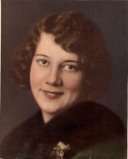
Jenny Sorensen Johnson's deceased ancestor, who led her from the burning school. Photo courtesy of Jenny Sorensen Johnson.
Not everyone who was in the school that day saw angels or ancestors. But even they have no doubt that miracles occurred.
“I’ve never doubted for a second that they saw exactly what they claimed to have seen or heard,” Wixom says. “The way those witnesses all came out, each very independent of each other, is proof enough.” Conger agrees. “I don’t remember seeing any angels, but I definitely felt guided,” she says. “I knew exactly what to do and where to go—I couldn’t have done that on my own. I believe what everybody else says and have faith that they saw what they saw. It’s not that we are better or more special than someone else—it’s not that God loved us more. For some reason, we were all supposed to make it out of that classroom alive. I don’t know why, but I am grateful.”
Williams, who was severely burned in the explosion, did not see angels that day either, but she experienced a different kind of miracle after being rushed to the hospital.
“My hair and eyelashes were gone. My face was completely unrecognizable,” she recalls. “All the nurses cried as they cleaned my wounds,” she says, “and the doctor was talking to my parents about skin grafts and plastic surgery.”
Soon, more victims began to arrive, and Williams learned that two priesthood holders were offering blessings, so she asked for one.
“I remember that same feeling I felt in the classroom when I prayed,” she recalls. “I felt deep peace. I experienced an incredible feeling of being known and loved. I was told my scars would completely heal, and no one would look upon my face and know what had happened. Instead, the scars I would have to heal from would be those of forgiveness and trust.”
Williams’s skin began to heal at a rapid rate, and despite the severe burns, no scar tissue formed. Over time, her skin healed completely, and today she carries no scars from the events of that day. But for Williams, her healing was not the greatest miracle she experienced.
“The true miracle was not that I survived or that the third-degree burns I suffered healed without a trace—it was that I learned I was not alone in the world.”

Amy Bagaso Williams with her husband and children. Despite being severely burned, she carries no scars from the day of the bombing. Photo courtesy of Amy Bagaso Williams.
The events of May 16, 1986, left an indelible mark on the hearts of those who survived, helping them live their lives with a new perspective and deeper gratitude because of the Cokeville miracle.
A few years after the bombing, Williams began taking missionary discussions. “It took me a few years to connect the priesthood blessing with the LDS Church, but I knew something special happened that day,” she says. Williams was baptized on August 16, 1989—her 14th birthday.
“Each year, I celebrate two birthdays,” she says. “The first is August 16, the day of my physical birth, and the second is the day I call my spiritual birth: May 16, the day of the bombing.”
“I try my best to make it a better world,” says Wixom. “That, I think, shows my gratitude.”
“We can find small miracles in our everyday lives,” adds Johnson. “We just have to look deep enough to see them, because they are there.”
Bringing the Miracles to the Big Screen

Photos courtesy of Excel Entertainment
Nearly three decades since the miraculous events transpired in the tiny town of Cokeville, Wyoming, movie producer T.C. Christensen, whose works include 17 Miracles and Ephraim’s Rescue, felt it was time to share those events with the world.
“I knew this was an amazing story, and one I felt like I needed to tell,” he says. “There are so many people—about 30 of them—who stand as witnesses to the spiritual blessings that happened that day.”
Although Cokeville is a predominantly LDS community, Christensen says he chose not to portray any specific religion in The Cokeville Miracle, now available on DVD.
“People of all faiths were blessed by the event,” he explains. “It would not have been fair to portray this as an LDS-specific miracle.”
“The magic of T.C.’s vision is that it’s a film for everyone,” adds actor Shawn Stevens, who plays the character of ecclesiastical leader John Teichert in the film. Stevens, who may be recognized for starring in the 1986 Church film Our Heavenly Father’s Plan, explains that his character embodies numerous people and does not represent a specific denomination.
Because Christensen’s faith-promoting film is based on actual events, Christensen wanted it to be both authentic and accurate. This included filming key scenes of The Cokeville Miracle on location in Cokeville, Wyoming, which created the unique opportunity of involving the actual survivors and people in the community.
“Many of the extras in the film are children of those who were students at the time the bomb went off,” Christensen explains. “There are also a couple scenes where parents are outside the school being held back by police. Those are also Cokeville people. It’s a very emotional scene. I would have thought I would have had to have actors to portray that, but those people knew what it felt like—that trauma of family members being held captive or themselves being held captive. We just did a few takes of those scenes and we had it.”
“There was really a sense of reverence on the set because we knew that we were dealing with a real event,” says Stevens. “And on the set there were many people who were real survivors of that event. T.C. was very cautious and sensitive to everybody’s feelings.”
Survivor Jennie Sorensen Johnson’s children were among the movie extras. “They wanted to do it for me,” she says. “They knew that it was extremely hard for me to be on set, but it really helped my anxiety to process the events of the day more.”
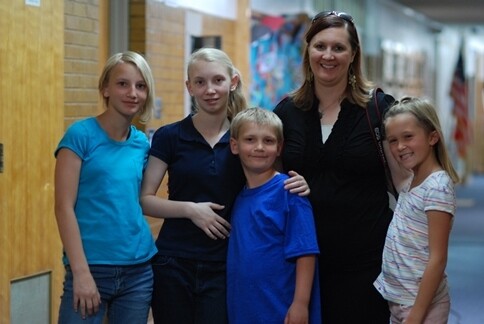
Jennie Sorensen Johnson with her children on the set of The Cokeville Miracle.
Kamron Wixom recognizes the courage of his fellow survivors for sharing their sacred experiences at the risk of ridicule and suffering emotionally by revisiting such traumatic experiences that took place the day of the Cokeville miracle.
“The knowledge of their experiences has shaped my life personally, and now with this movie, even more lives can be blessed with the knowledge of what help there is from the other side,” he says. “We pressed forward knowing that Heavenly Father wants this story told, and that the benefits would far outweigh the hardships.”
“I hope that people come away from the film impressed by the power of prayer, that if they have not been using prayer in their lives, they would start,” says Christensen. “I hope people believe that if God intervened and helped these people, maybe He can intervene and help them with the problems in their lives, too.”
Experience the powerful true story of The Cokeville Miracle for yourself. Pick up your copy on DVD or Blu-ray at Deseret Book stores or at deseretbook.com.



